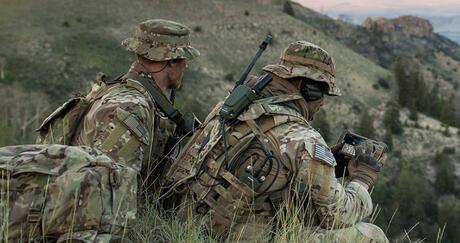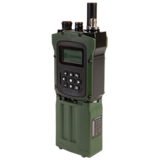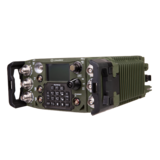Militaries the world over are leveraging communications capabilities from an increasing number of various assets at higher rates to harness the full power of multi-domain operations. With the increased amount of data streaming across the battlespace, size, weight and power considerations are just as important for the dismounted soldier as they are for vehicular and stationary platforms.
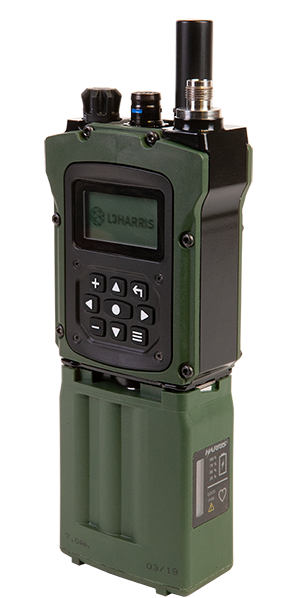
When looking forward to the U.S. Army’s Network Capability Set ’25 requirements, Col. Shane Taylor, project manager for tactical network within PEO C3T, told C4ISRNET: “There’s a lot of kit on those platforms and anytime you want to put more kit on them, there’s always that challenge of we want to be very, very careful not to overburden the soldier. These are fighting platforms. Probably the biggest challenge in my mind is balancing — ensuring they have the necessary network capabilities that they need but also doing it at a level that minimizes impact on their ability to fight.”
Yet having to carry the added weight of two or more devices with similar capabilities, but different functions, for the same mission hinders effectiveness.
That’s why L3Harris Technologies' mission modules solve the size, weight and power challenges that arise when adding capability by providing a plug-and-play, add-on functionality of a simultaneous second or third network channel for L3Harris equipment already in the field. These network channels can operate independently or be crossbanded to exchange voice and data between different radio networks.
Enabling Capabilities
L3Harris mission modules add network extensibility and mission flexibility to the company’s latest tactical communications solutions.
“Our mission modules deliver new capabilities, which isn’t natively inside your radio, on the fly as mission dictates,” said Melissa Daminski, L3Harris senior director of Product Management. “It offers our customers a way to leverage a new piece of functionality instantly and without needing to procure a completely separate radio system with the added logistics of costly and unwieldy cabling, additional battery types and other concerns.”
With an already-fielded, compatible L3Harris radio, mission modules reduce the connections required to add device capability, making a more-reliable and compact solution for greater connectivity at the edge. If a particular capability is not required for a mission, or is not needed for the entire team, that particular mission module can be left at base. Further, mission modules facilitate a singular user interface for multiple capabilities, reducing training requirements.
“Mission modules make it easier to add new, unique – and even commercial – technology to your trusted radio,” added Ryan McCarty, L3Harris vice president and general manager of U.S. DoD Tactical Communications. “You have a consistent interface for future growth on multiple radio systems simultaneously, opening the doors for a myriad of innovations in battlespace interoperability.”
For example, a multiband radio can be enhanced with a ISR or soldier radio capability, immediately connecting all radios and providing enhanced situational awareness with a true third channel of independent capabilities.
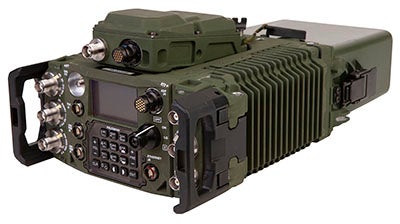
Capabilities within L3Harris mission modules provide extensible functionality for its latest offerings, including the AN/PRC-163, AN/PRC-167 and RF-7850D radios.
They provide select L3Harris radios bolt-on accessibility to enhance capability without modifying the host device itself, with the ability to swap capabilities while on a mission. The added capability is fully integrated with the device, and users can access its functions with their host radio’s front panel, keyboard display unit or end-user device.
“Not only is situational awareness not as expensive as it was, this saves operators the burden of carrying and managing redundant end-user devices and batteries when out in the field,” said Daminski.
A Growing Portfolio
“There are mission modules we are actively developing and releasing today, but there’s no telling what we or industry partners might develop in the future,” said McCarty, noting the company is investigating feasibility of higher-capacity line-of-sight and high-frequency communications. “We’re just beginning to realize the possibilities of mission modules.”
L3Harris’ current portfolio of mission modules includes the company’s KIV-335A ISR Mission Module, a small form factor tactical Full Motion Video (FMV) receiver with the ability to crossband encrypted video streams over MANET, and the Iridium mission module that leverages 66 low-Earth orbit, cross-linked satellites to provide on-the-move satellite communications without the need to locate a geostationary satellite.
History and Current State
L3Harris’ mission module technology originated out of the U.S. Special Operation Command’s (USSOCOM) initial multi-channel handheld radio contract, as part of the Next Generation Tactical Communications program, in 2015.
When USSOCOM awarded L3Harris the initial AN/PRC-163 contract, the command also requested a separate mission module to provide the radios with a full-motion video ISR receiver, which became the original ISR mission module.
The company immediately recognized the capability’s applicability on other devices and began concepts for radios including the NSA-certified AN/PRC-167 and CITADEL-equipped RF-7850D. To provide as much commonality as possible, L3Harris mission modules at large share the same footprint, connectors and other accessories. This provides the ability to leverage commercial technology on high-grade secure devices – and vice versa when feasible.
The KIV-335A ISR mission module is production-released and received NSA certification early this year. The Iridium and RF-7850S mission modules are expected to be released early this summer.
L3Harris is also evaluating the feasibility of an international version of the ISR mission module.
Looking Forward
The potential applicability for mission modules is endless; the only limitation is acceptable power draw and the footprint of the form factor.
Mission modules can support additional waveforms as needs arise. Operators can connect to multiple sensors and aerial ISR video and push the data across a tactical Mobile Ad-hoc Network or other modes of communication.
“Our customers’ networking, computing and C5ISR needs evolve in real time, and the flexibility of our designs gives us the agility to meet their ever-changing needs,” said McCarty. “As a software-defined radio, a Falcon® IV radio purchased today will meet their needs for years to come.”

